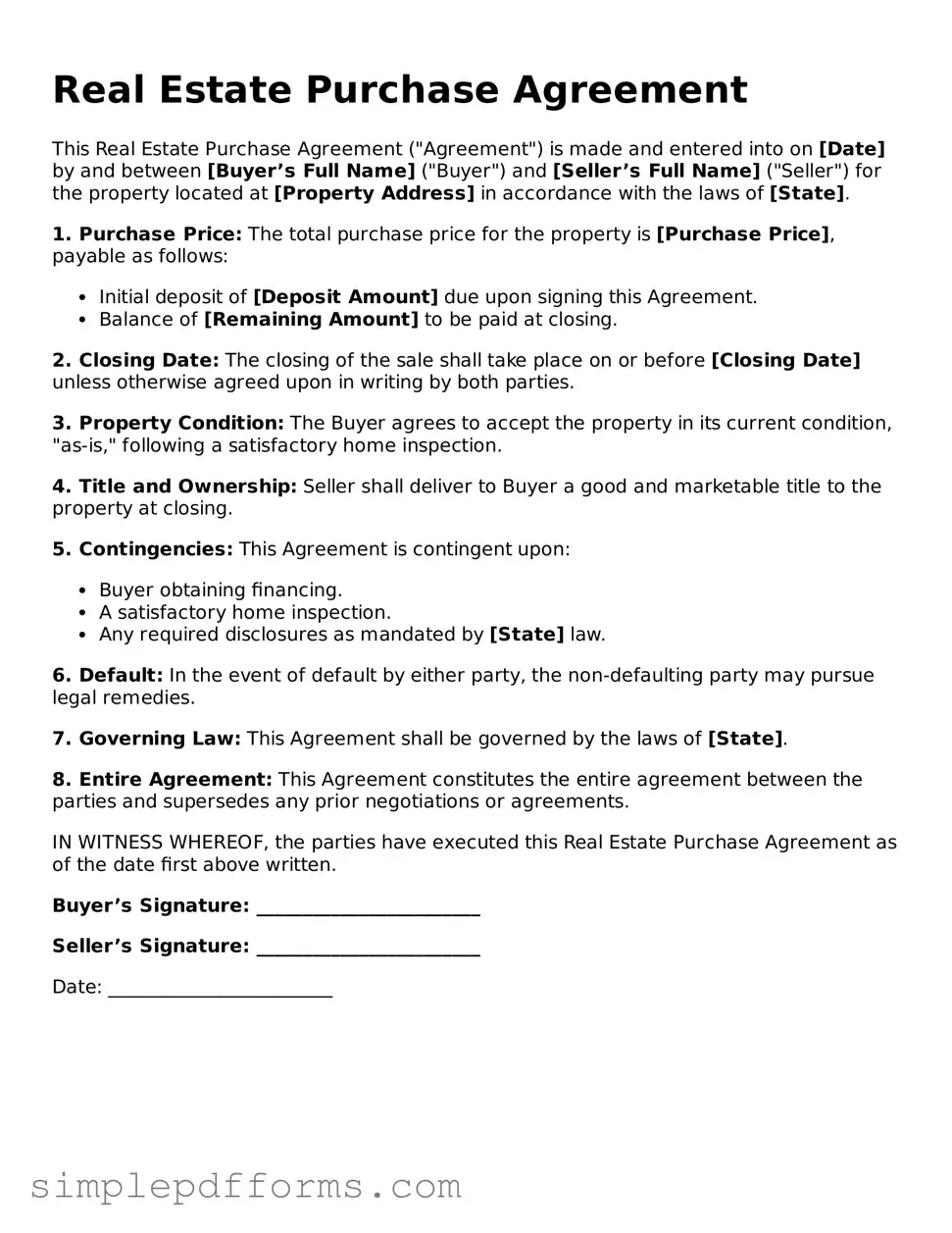Real Estate Purchase Agreement
This Real Estate Purchase Agreement ("Agreement") is made and entered into on [Date] by and between [Buyer’s Full Name] ("Buyer") and [Seller’s Full Name] ("Seller") for the property located at [Property Address] in accordance with the laws of [State].
1. Purchase Price: The total purchase price for the property is [Purchase Price], payable as follows:
- Initial deposit of [Deposit Amount] due upon signing this Agreement.
- Balance of [Remaining Amount] to be paid at closing.
2. Closing Date: The closing of the sale shall take place on or before [Closing Date] unless otherwise agreed upon in writing by both parties.
3. Property Condition: The Buyer agrees to accept the property in its current condition, "as-is," following a satisfactory home inspection.
4. Title and Ownership: Seller shall deliver to Buyer a good and marketable title to the property at closing.
5. Contingencies: This Agreement is contingent upon:
- Buyer obtaining financing.
- A satisfactory home inspection.
- Any required disclosures as mandated by [State] law.
6. Default: In the event of default by either party, the non-defaulting party may pursue legal remedies.
7. Governing Law: This Agreement shall be governed by the laws of [State].
8. Entire Agreement: This Agreement constitutes the entire agreement between the parties and supersedes any prior negotiations or agreements.
IN WITNESS WHEREOF, the parties have executed this Real Estate Purchase Agreement as of the date first above written.
Buyer’s Signature: ________________________
Seller’s Signature: ________________________
Date: ________________________
